‘What a shame when a dinosaur disappears into the mansion of an oligarch rather than being displayed for all to enjoy’: The ethics of the dinosaur auction
Fancy a stegosaurus in your living room? You can buy one at auction. But the latest luxury good is a paleontologist's worst nightmare.

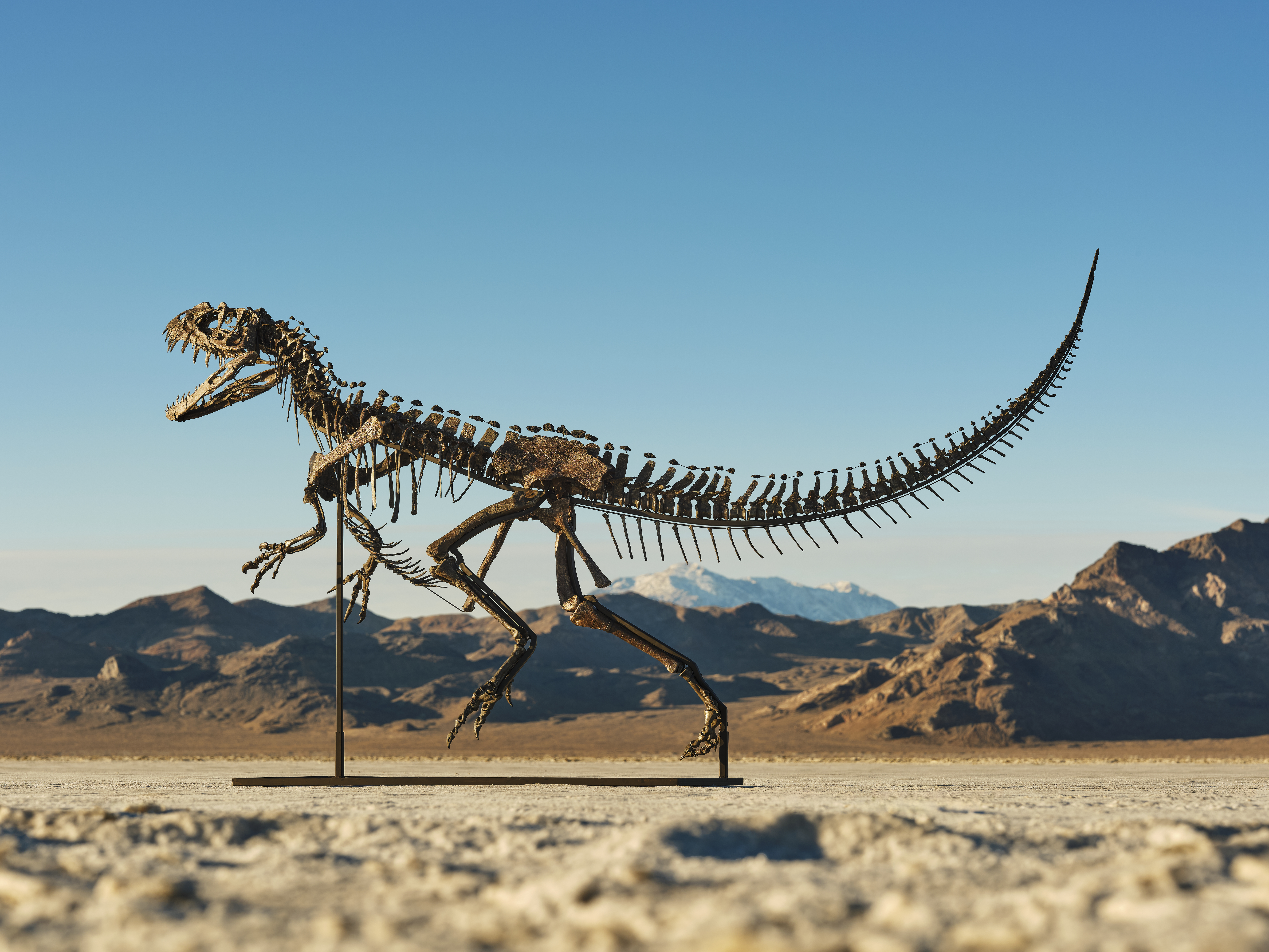
‘Your scientists were so preoccupied with whether or not they could, they didn't stop to think if they should,’ warns Jeff Goldblum in Jurassic Park, foreshadowing man’s blinding, destructive greed when it comes to dinosaurs. It was the first film in a box-office grossing series — the latest of which, Jurassic Park Rebirth, came out this week. The franchise’s continuing popularity proves that we are as obsessed with dinosaurs as we have ever been. The difference between 1993, when the original film came out, and now, is that it’s becoming increasingly possible to ‘buy into’ dinosaurs like never before.
Case in point, a juvenile Ceratosaurus is going up for auction as part of Sotheby's Natural History Auction, in New York, on July 16 — or ‘Geek Week’, as the Sotheby's team have termed it. A carnivorous dinosaur that roamed the earth approximately 145-149 million years ago, the Ceratosaurus is about 6ft tall and 10ft long. Only four of this kind of dinosaur have ever been found, and this is the only juvenile specimen, making it of unparalleled importance. It is also one of the most complete examples of its genus in existence, meaning that the impact of studying it would be huge. It could lead to marvellous new discoveries about the long lost species. It could — but it may not — as palaeontologists will be powerless to access it if it ends up in a billionaire’s living room.
'Have you seen Raiders of the Lost Ark? Well, imagine if Indy had blown it up with a rocket launcher. Imagine the history lost.'
‘I think, in general, you've got kind of layers to the market,’ Cassandra Hatton, the vice chair of science and natural history at Sotheby’s tells me on her lunch break. ‘You've got people who just want a dinosaur, and they're going to be interested [in this one] as this is the size that could fit in their home, maybe.’ Hatton has been working in the luxury historic goods trade for 24 years, starting as a researcher for a dealer in rare books and manuscripts.
She has always specialised in the history of science and has a printed replica of the skull of Apex — the most expensive dinosaur fossil ever sold at auction (for $44.6 million, by Sotheby's last year, which Hatton was responsible for) — in her house. The British auction house was the first to deal in dinos, beginning with Sue the T-Rex who sold for $8.3625 million in 1997 followed by her male counterpart Stan, 23 years later, for $31.8 million. Hatton tells me all this before she has even taken a bite of her salad. It’s clear she is something of an expert.
‘I think there's been a rise in popularity,’ she says. ‘I mean look, first, let's just agree: dinosaurs have always been popular. That's never gone away, but I do think that there has been an increase in interest,’ she says, adding that she is of the belief that lots of the work she has done at Sotheby’s, and before that at Bonhams, where she was in a similar role, has helped. The juvenile Ceratosaurus is likely to fetch more than a pretty penny. The only known specimen of its kind was discovered in 1995 at the Bone Cabin Quarry, a couple of miles northwest of Laramie in Wyoming, US. Hatton calls it ‘a marvel of prehistoric preservation’ and says it is ‘among the very finest dinosaur fossils to ever be offered at auction’. It is estimated to sell for between $4-6 million.
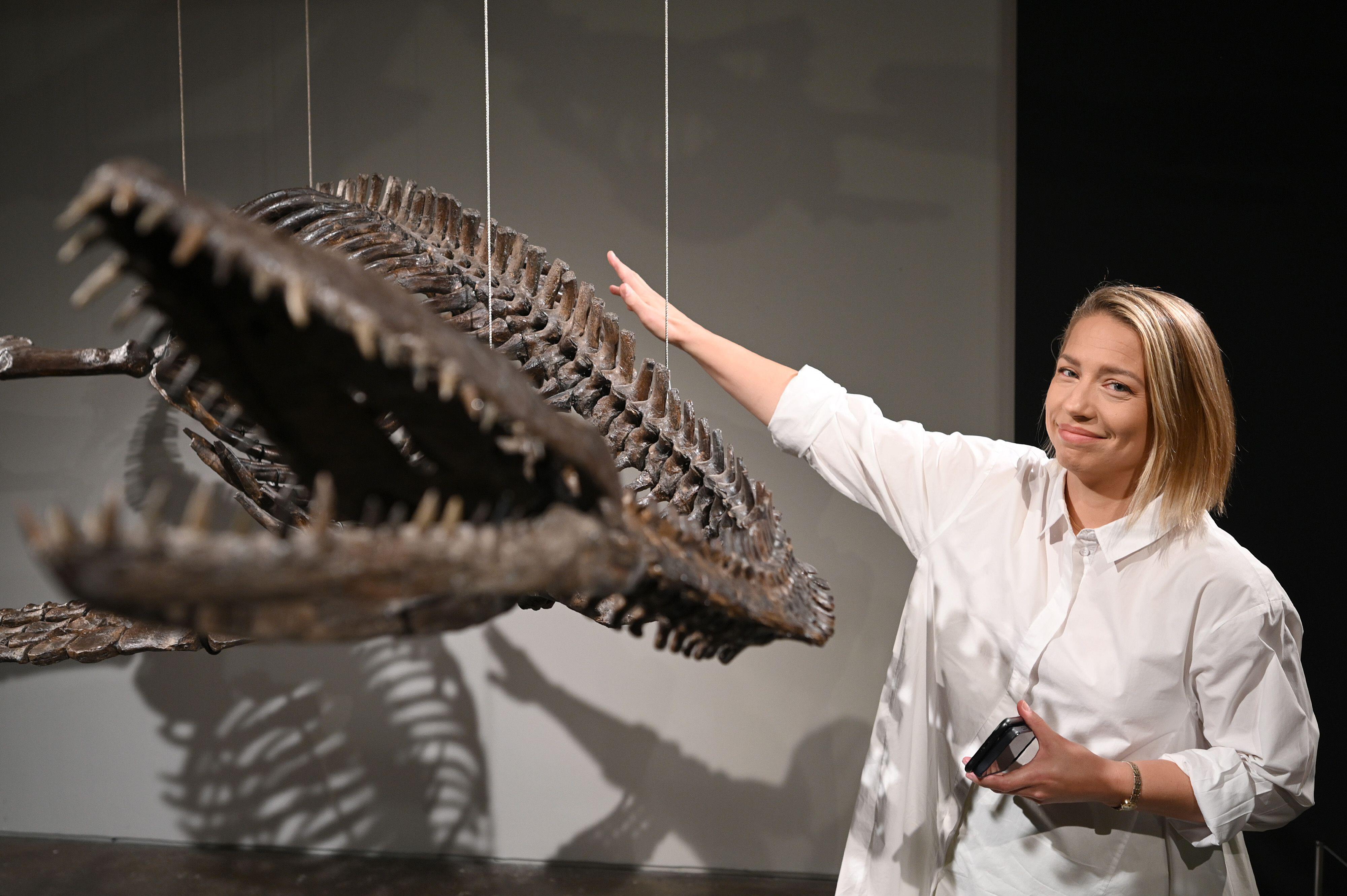
Cassandra Hatton with a Plesiosaur fossil in 2023.
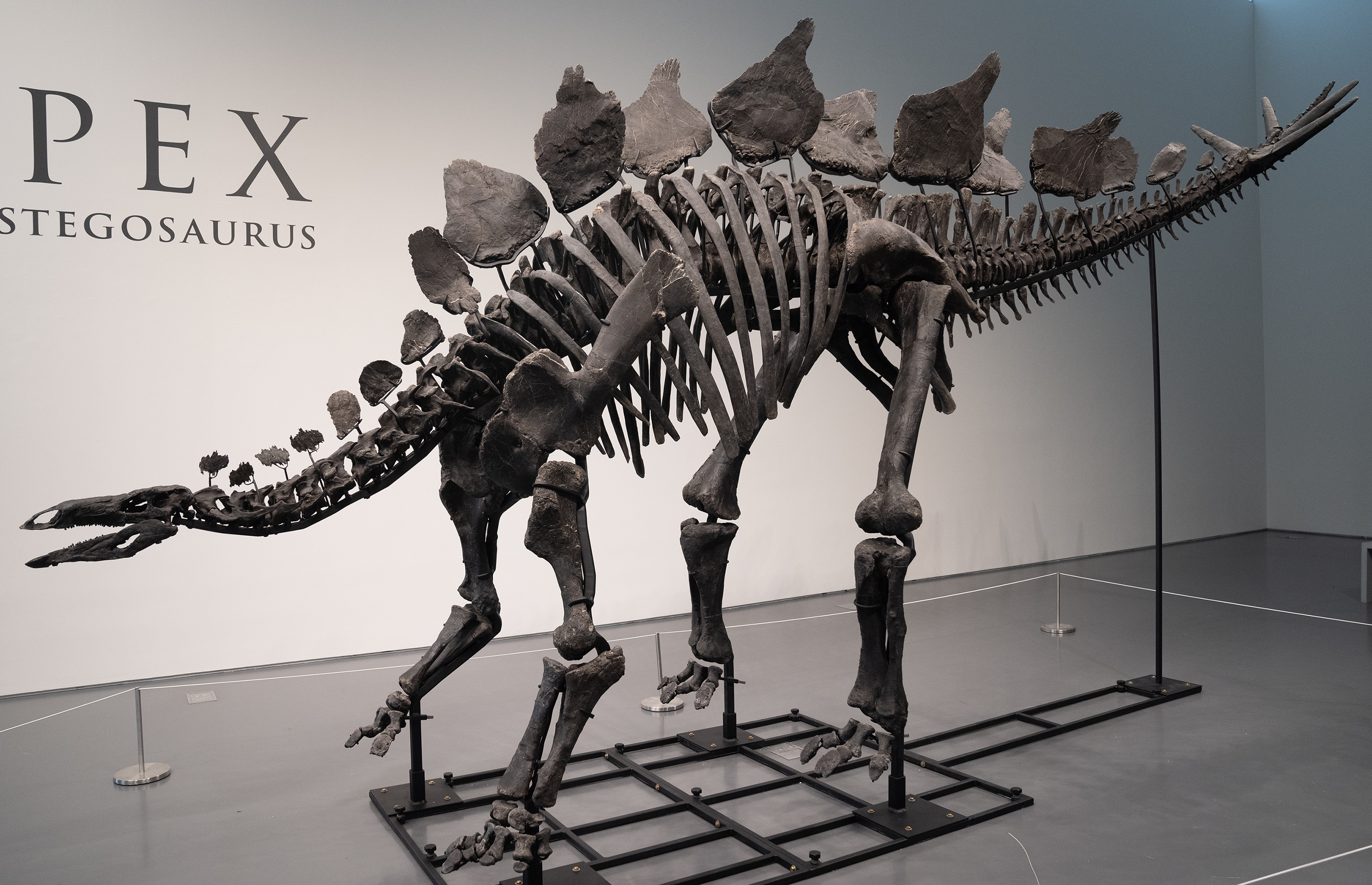
Apex, the most expensive dinosaur fossil sold at auction.
‘This is devastating,’ says Dr Thomas Carr, a director at the Carthage Institute of Paleontology. ‘It's sort of hard to find words for it. It's obscene.’ His concern, and that of many others in the field, is that the fossil will end up in a private collection, meaning that scientists either literally can’t study it, or are ethically bound not to because of the implications of the ownership. Professor Paul Barrett of The Natural History Museum in London explains: ‘As with all science, we like the raw material to be available for all people to use it to verify those results, and unless there's a guarantee that you can go back to those skeletons over and over again — because one person might have got something wrong or missed something — then we're not capable of doing the science properly.
‘Most of the scientific journals will not allow you to publish on a specimen that's in private hands, because of that problem of reproducibility, essentially. So everything that is a significant specimen that goes into a private collection in the short term, at least, is a loss to science.’ Or, to put it in Carr’s words: ‘Have you seen Raiders of the Lost Ark? Well, imagine if Indy had blown it up with a rocket launcher. Imagine the history lost.’ It is like that. For the uniformed general reader the prospect of a dinosaur auction is quite an exciting one, but for individuals specialising in a distinct genus of dinosaurs it is devastating beyond comprehension.
Exquisite houses, the beauty of Nature, and how to get the most from your life, straight to your inbox.
‘If I was working on Ceratosaurus I would be out of my mind over this auction because of the completeness of the specimen and the fact that it's young,’ Carr says. There are not many of each dinosaur, and out of those that are available to study many are incomplete models, finished off by mankind or composite ones, made up of the bones of three or maybe four individual dinosaurs. Very few are as young as the specimen for sale. ‘You know, in terms of growth, just what a profound loss of understanding of that species [this could be],’ Carr adds, clearly incredulous and genuinely quite forlorn. ‘It’s like living in an upside-down world.’
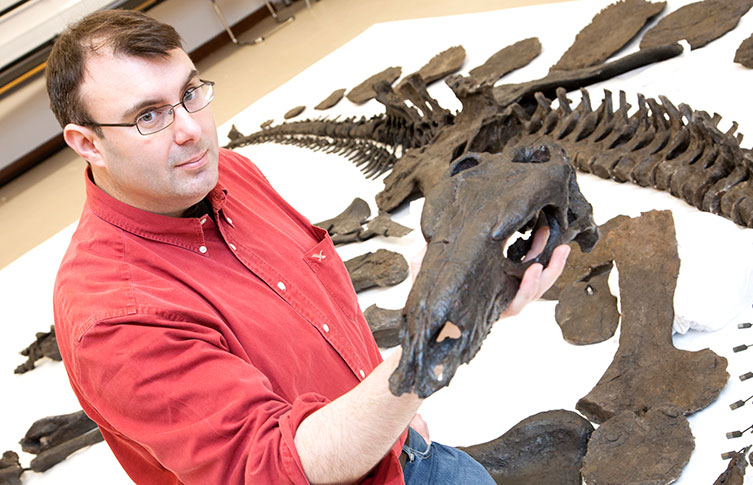
Paul Barrett with Sophie the Stegosaurus at the Natural History Museum in London.
Many collectors, on the other hand, are adamant that their work is for the good of all. James Perkins, the owner of Parnham Park, does not own any dinosaurs but, up until recently, was in possession of arguably the next best thing(s): the skeleton of a wooly mammoth and that of an Ichthyosaurs — an extinct marine reptile from the Jurassic period. Safe to say, he is no stranger to a prehistoric bidding war.
He agrees that rare historical specimens should be available for both scientists and the general public. ‘Of course,’ he says. ‘But don’t forget, museums do have them, but as they are finding more, they're the kind of thing you could have in a private collection [too].That doesn't mean that private collections don't lend them. I mean, in my particular case, I might have a private collection that is open to the public. For me, collecting is all about sharing.’
A post shared by Parnham Park (@parnhampark)
A photo posted by on
'Frankly, if we don't excavate the dinosaurs, they're lost. So it is because of the commercial trade that we have found so many.’
Barrett caveats: ‘It’s not to say that private collectors are all bad people or evil — a lot of them are collecting these objects because they're interested in them, many of them do want scientists to come and look at them [...] but there is definite potential of losing a lot of information about those things that do disappear into private hands.’
The answer, says Barrett, is museums — like his beloved Natural History, where he has worked since 2003. ‘I generally think the scientifically important specimens should be in museums if at all possible,’ he says. ‘I think if it's legal within a jurisdiction to buy and sell a fossil, then legality is different from the ethics of the situation, and we have to be careful not to confuse those two things.’
So are dinosaur skeletons the new status symbol? Instead of a Birkin bag, Rolex or Lamborghini, are the uber-rich instead opting for a Diplodocus? It’s better, thinks Carr, to see them as substitutes for a Picasso or Renoir. ‘What we have is a market — an art market,’ he explains. ‘And this is what's really disconcerting about all this — the modern problem of the sale of fossils is that the art market has sort of appropriated dinosaur fossils as luxury items. So that's why we're seeing them being auctioned through Christie's and Sotheby's and so on. And just given the amounts of money involved, no museum is stupid enough to waste millions of dollars on one skeleton.’
Perkins corroborates this. ‘My collection is full of things that I perceive to be unloved or unrecognized,’ he says, ‘like with art, I like discovering new artists that aren't in a Bond Street gallery.’ Is this what the coveting of dinosaur fossils, then, has become synonymous with? The search for the next Banksy?
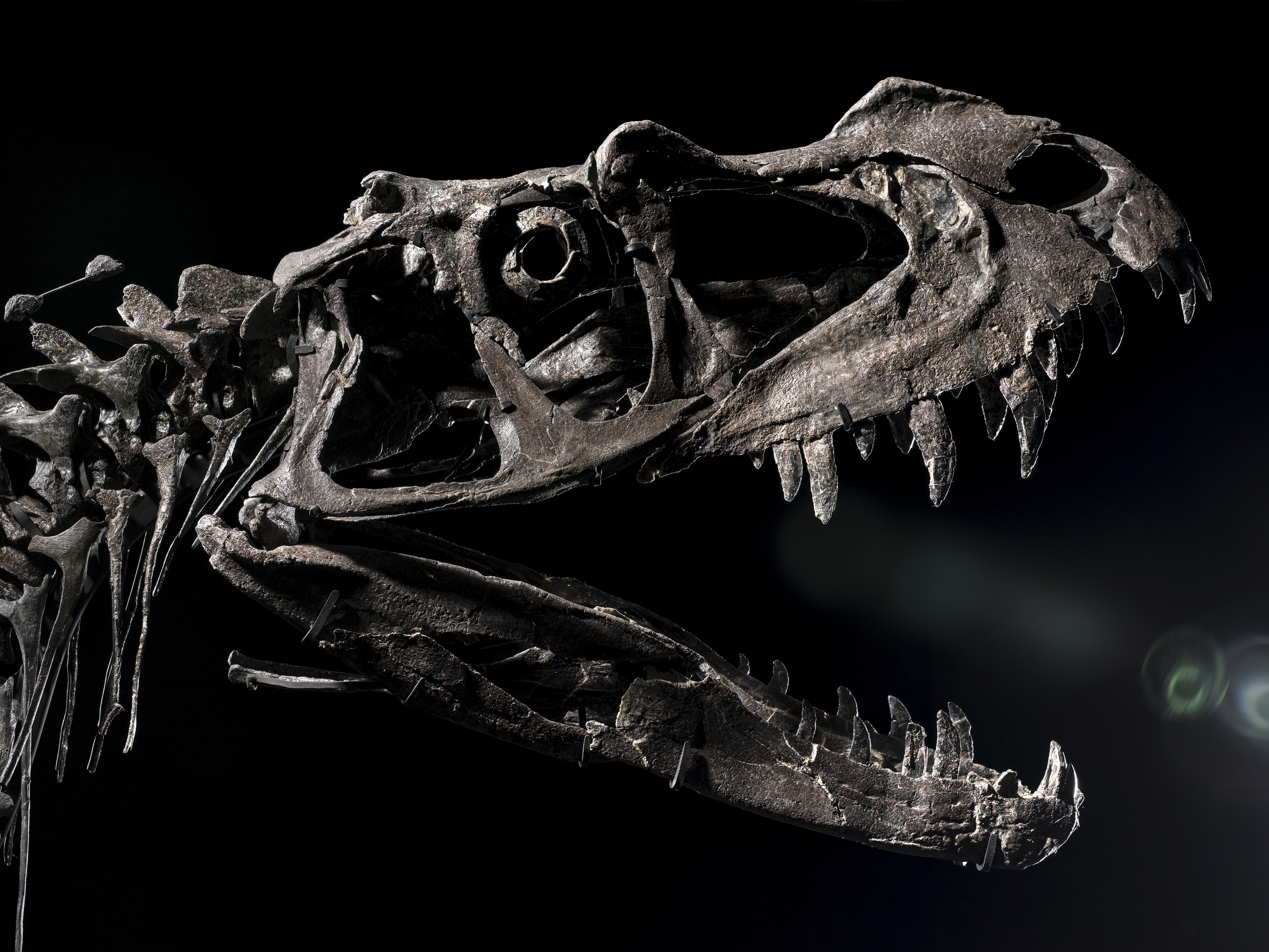
The right side of the skull of the Ceratosaurus.
Steve Brusatte, an evolutionary biologist specialising in the anatomy and evolution of dinosaurs, thinks it's natural for people to want to own the fossils. The urge to have a Brachiosaurus in your breakfast room is not alien to him, either. They ‘have a magical hold on so many of us,’ he says of the species, ‘and, although my wife might disagree, I'd love to have my own dinosaur skeleton at home’. Like his peers in the industry, however, he is pro-public ownership: ‘I totally understand why people want to own a dinosaur but they belong in museums, where they can be displayed for the public, studied by scientists, and help to educate children and families from all walks of life,’ he says. ‘What a shame when a dinosaur disappears into the mansion of an oligarch rather than being displayed for all to enjoy.’
Carr is less of a diplomat. On the Ceratosaurus he puts it plainly: ‘Let's pretend that for people, we only had three skeletons: one's a complete adult, and two are just skulls [this is the case for Ceratosaurus]. That's the sum of our knowledge of the entire history of humanity, and then someone comes along with the skeleton of an adolescent.’ He pauses for effect. ‘But someone intervenes and says: “No, I'm selling that”, and in one stroke we wipe out the opportunity to really understand anything about the late growth of a rare species.’
For Hatton of Sotheby's, the business is far more practical: ‘I think we can all have great ideals, but the reality is that they are personal property. In the United States [where she is speaking to me from], you own your property. If your fossil comes off your property, you own the fossil and you have the right to sell it. So there's a difference between what you think would be a perfect world, and what is the reality. And frankly, if we don't excavate the dinosaurs, they're lost. So it is because of the commercial trade that we have found so many.’
I ask Hatton if she would have a dinosaur skeleton in her own home — if money was no object? ‘Um… no. I'd be too scared to break it.’
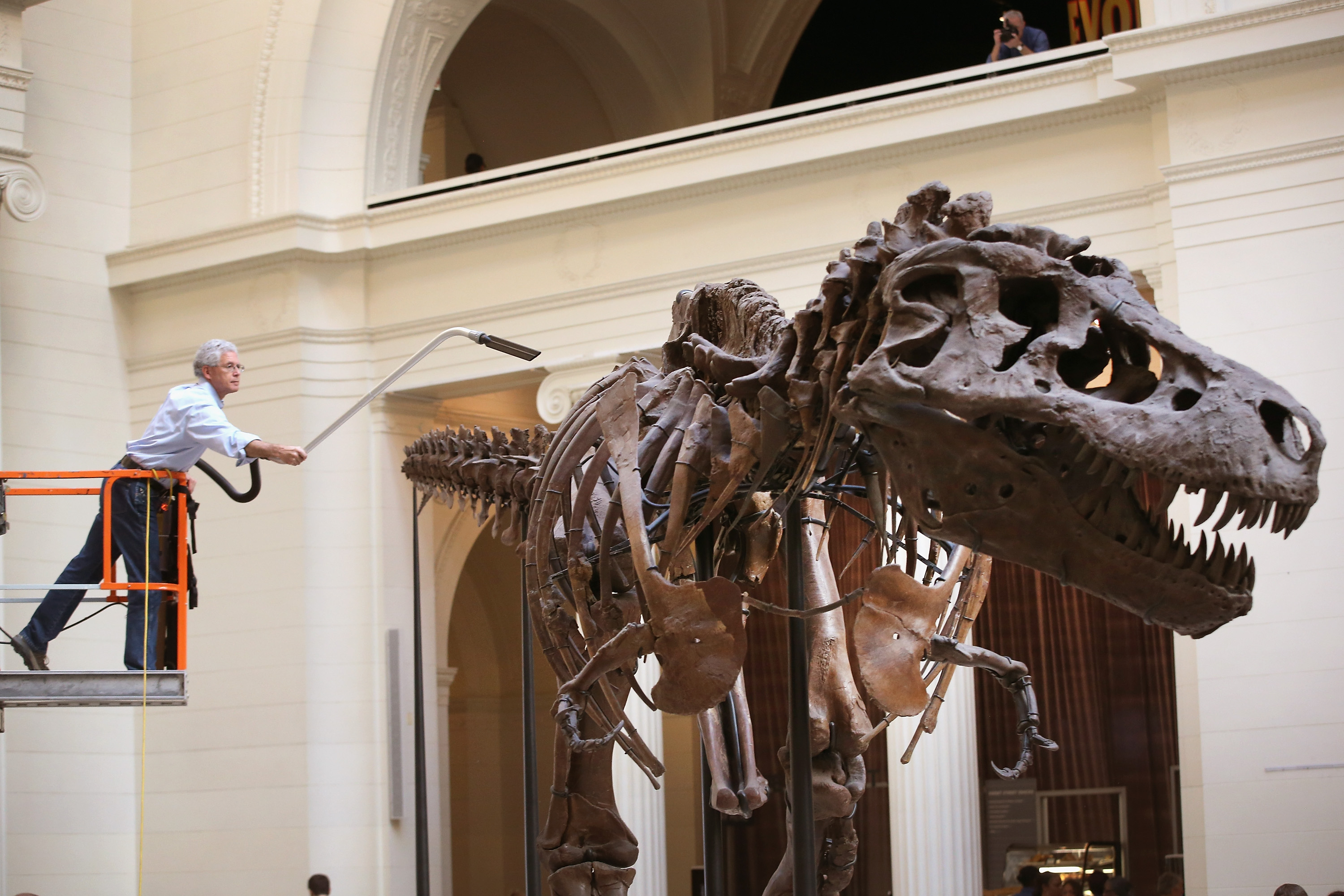
The Field Museum in Chicago, backed by funds from individual citizens and private companies, purchased Sue the T-Rex in 1997.
Lotte is Country Life's digital writer. Before joining in 2025, she was checking commas and writing news headlines for The Times and The Sunday Times as a sub-editor. She has written for The Times, New Statesman, The Fence and Spectator World. She pens Country Life Online's arts and culture interview series, Consuming Passions.
